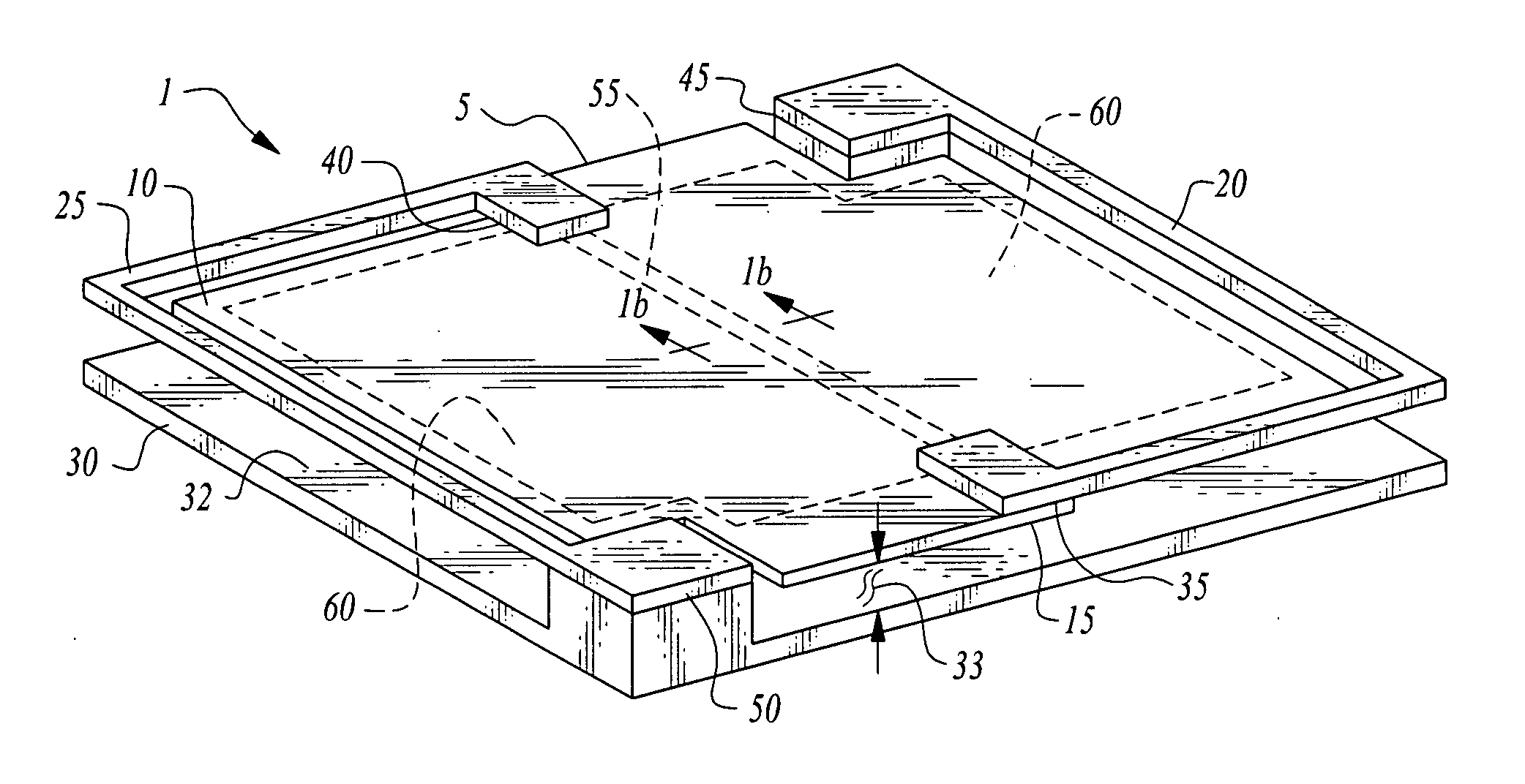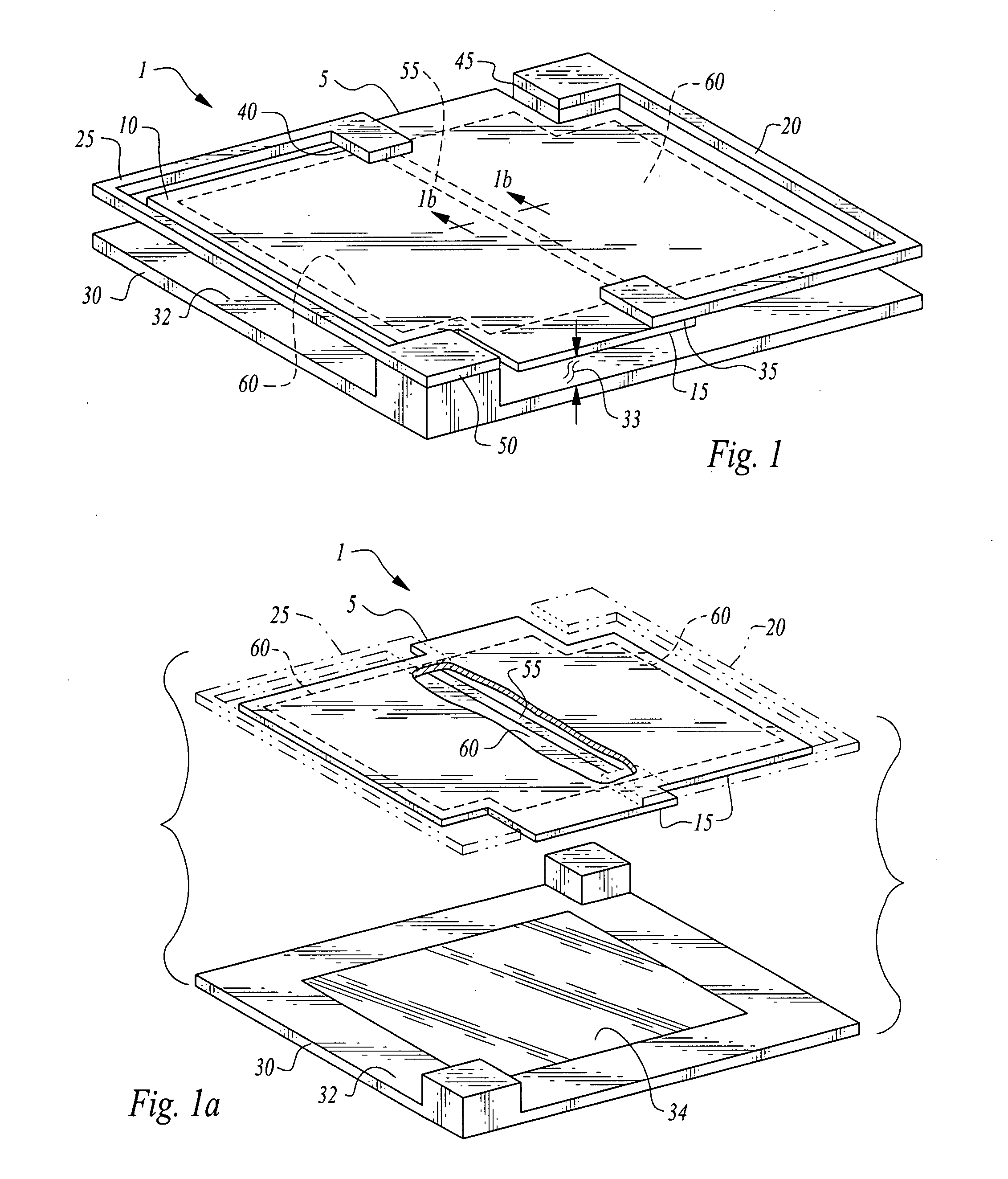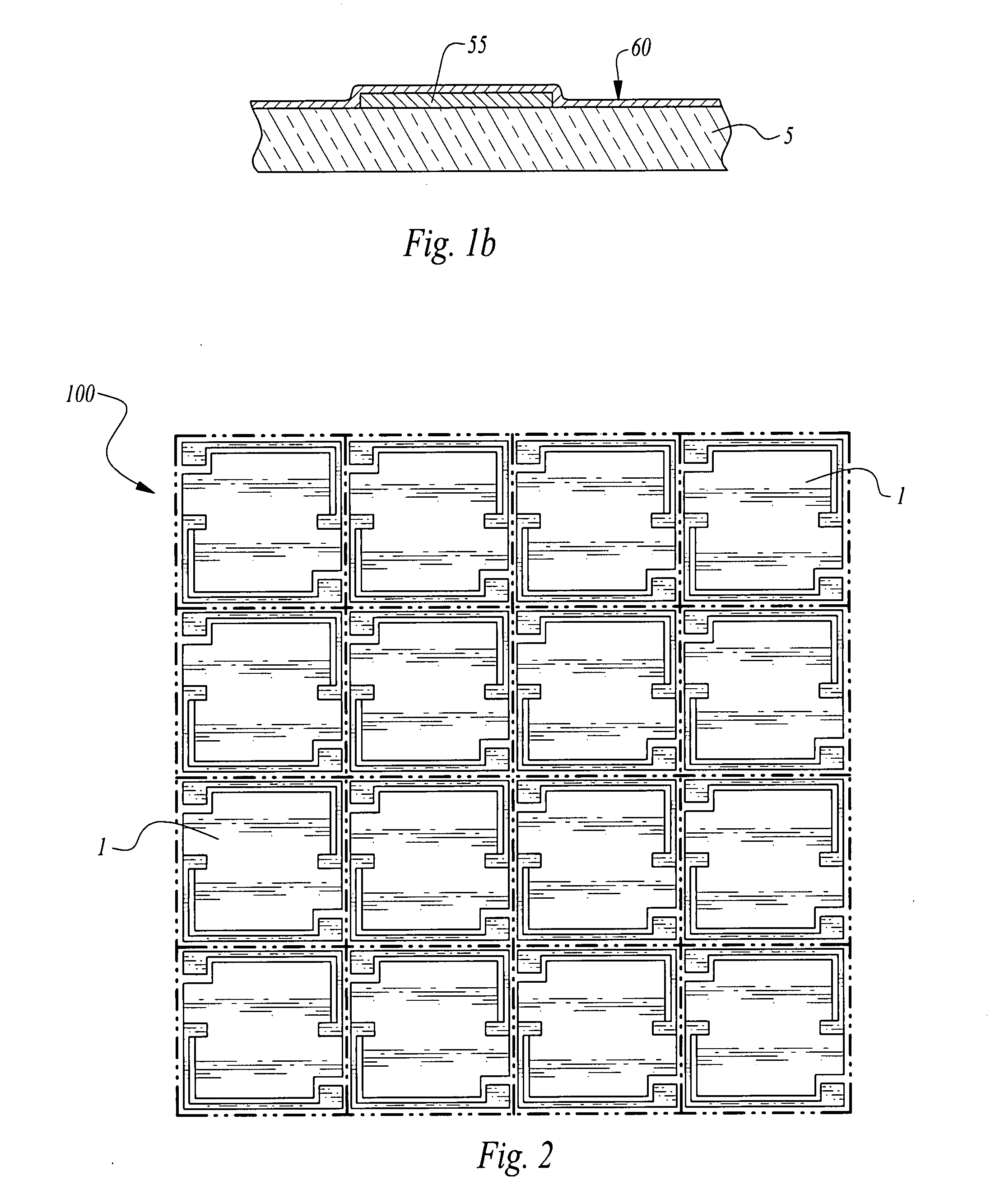Large format thermoelectric infrared detector and method of fabrication
a thermoelectric infrared detector and large-scale technology, applied in the field of infrared detectors, can solve the problems of photon detectors undesired cooling to cryogenic temperatures, change in the temperature of detectors, change in the electrical resistivity or electrical polarization of detector materials, etc., to enhance the ir absorbing enhance the energy absorption ability of the plate structure, and enhance the effect of infrared radiation absorption
- Summary
- Abstract
- Description
- Claims
- Application Information
AI Technical Summary
Benefits of technology
Problems solved by technology
Method used
Image
Examples
Embodiment Construction
[0040]Turning now to the figures wherein like numerals define like elements among the several views, FIGS. 1 and 1a illustrate a preferred embodiment of detector 1 of the invention.
[0041]Detector 1 comprises a plate structure 5 comprising an upper major plate surface 10 and a lower major plate surface 15. Plate structure 5 functions as an infrared radiation collector of IR energy incident upon upper major plate surface 10.
[0042]Plate structure 5 is supported by at least two thermoelectric structures referred to as first thermoelectric structure 20 and second thermoelectric structure 25. First and second thermoelectric structures are preferably elongate, narrow beams or legs comprising one or more thermoelectric materials such as Bismuth-Telluride, Bismuth-Antimony-Telluride, polysilicon, polysilicon / germanium or equivalent materials.
[0043]Plate structure 5 is suspended above a substrate 30 by means of the thermoelectric structures so as to define a hollow volume and an offset distan...
PUM
 Login to View More
Login to View More Abstract
Description
Claims
Application Information
 Login to View More
Login to View More - R&D
- Intellectual Property
- Life Sciences
- Materials
- Tech Scout
- Unparalleled Data Quality
- Higher Quality Content
- 60% Fewer Hallucinations
Browse by: Latest US Patents, China's latest patents, Technical Efficacy Thesaurus, Application Domain, Technology Topic, Popular Technical Reports.
© 2025 PatSnap. All rights reserved.Legal|Privacy policy|Modern Slavery Act Transparency Statement|Sitemap|About US| Contact US: help@patsnap.com



